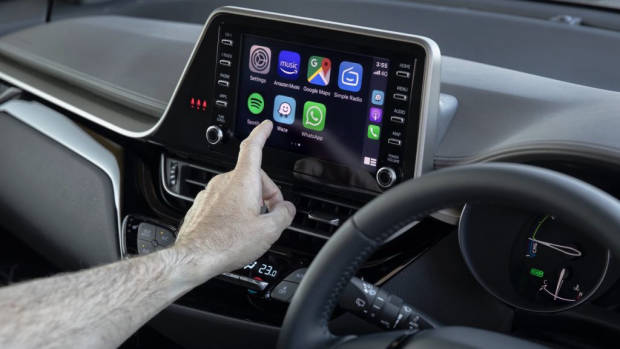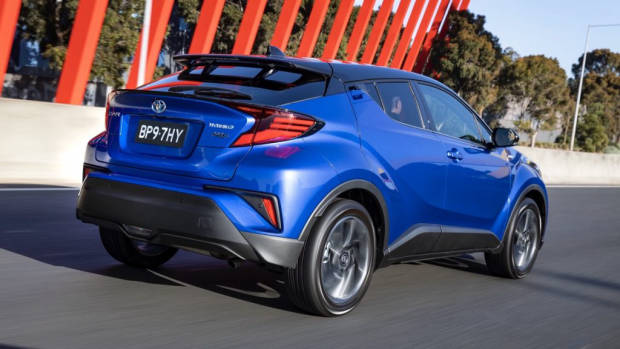-
Car Reviews
- All reviews
- Midsize SUVs
- Small cars
- Utes
- Small SUVs
- Large SUVs
- Large cars
- Sports SUVs
- Sports cars
- Vans
Latest reviews
- Car News
-
Car Comparisons
Latest comparisons
- Chasing Deals
A lightly facelifted version of the Toyota C-HR will arrive in the brand’s Australian dealerships this week. Sporting gently massaged lines and new smartphone integration technology inside, the biggest change for the 2020 Toyota C-HR is the addition of a 1.8-litre petrol-electric hybrid, shared with the Corolla, at the top of the range.
Promising frugal economy of 4.3L/100km combined – with sub-fours doable in town driving – the new C-HR hybrid brings the total number of Toyota models that offer partial electrification to eight.
The C-HR hybrid, which produces a combined 90kW of power, is also the only petrol-electric option in its segment, offering buyers in the popular small crossover space an easy way to reduce their personal CO2 footprint without adapting their driving habits.
A 1.2-litre turbocharged petrol four-cylinder producing 85kW/185Nm (reviewed here) remains the ‘default’ engine and the only one offered on the base model, which increases in price by $550 to $29,540 (driveaway pricing TBA). In a move that bucks the recent trend at Toyota, the hybrid option is available only on the pricier Koba 2WD grade.
Although Toyota normally targets a $1,500 hybrid premium, upgrading to the petrol-electric C-HR will require shelling out another $2,500 – bringing the total cost for a C-HR Koba 2WD hybrid to $36,440. That makes it the most expensive C-HR. The Koba can be had with the turbo petrol alternative for $33,940 in front-drive or $35,940 with AWD. Unlike on the larger RAV4, there is no hybrid with AWD.
The changes to the C-HR for 2020 are otherwise minimal. Inside, the tastefully appointed cabin is updated with a larger eight-inch touchscreen that now includes standard-fit corded Apple CarPlay and Android Auto. Navigation is also bundled in the screen, but unusually for Toyota, DAB digital radio is not available.
The seats on the entry-level ‘standard’ grade are cloth while Koba buyers enjoy black leather with a subtle diamond motif, though the seats are manually adjusted no matter the grade. The second row is roomy but a little claustrophobic due to the rising window line.
Both models feature a generous set of safety technologies, including autonomous emergency braking, all-speed adaptive cruise control, lane departure warning with lane tracing, and a reversing camera. Koba variants now benefit from a 360-degree parking camera. LED headlights are standard.
Our review of the new C-HR hybrid will be available on Friday, December 6th.
Latest news
About Chasing cars
Chasing Cars reviews are 100% independent.
Because we are powered by Budget Direct Insurance, we don’t receive advertising or sales revenue from car manufacturers.
We’re truly independent – giving you Australia’s best car reviews.

